contributor
Black Water Bug Identification and Control
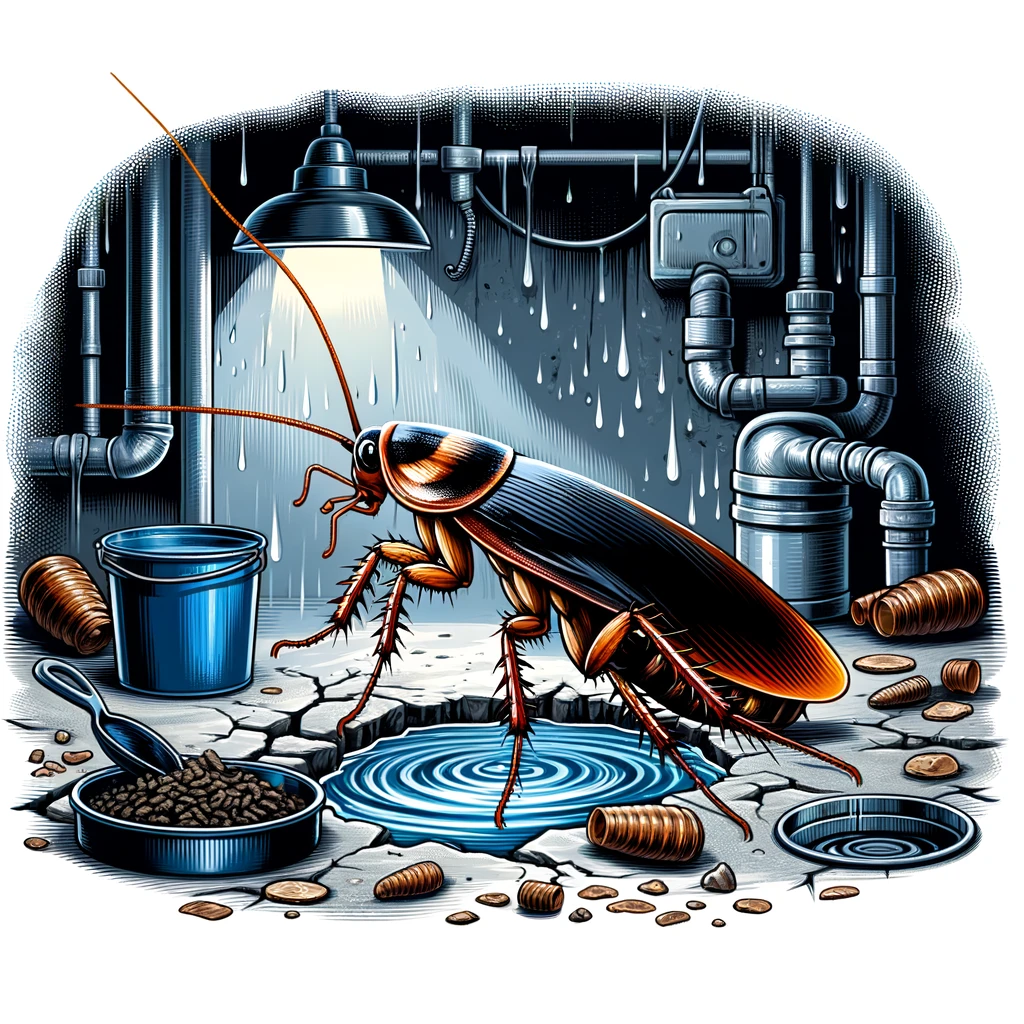 The term “black water bug” is often used to describe certain types of cockroaches, particularly the Oriental cockroach. These pests are commonly found in damp, dark environments and can become a nuisance in homes and buildings. In this article, we’ll explore what black water bugs are, how to identify them, and the best methods for controlling and preventing infestations.
The term “black water bug” is often used to describe certain types of cockroaches, particularly the Oriental cockroach. These pests are commonly found in damp, dark environments and can become a nuisance in homes and buildings. In this article, we’ll explore what black water bugs are, how to identify them, and the best methods for controlling and preventing infestations.
What is a Black Water Bug?
Oriental Cockroach
The black water bug is most commonly identified as the Oriental cockroach (Blatta orientalis). These cockroaches are known for their dark, almost black coloration and their preference for moist environments.
- Appearance: Oriental cockroaches are dark brown to black and have a glossy appearance. Adult females are about 1.25 inches long, while males are slightly smaller.
- Habitat: These cockroaches thrive in cool, damp areas such as basements, crawl spaces, and around plumbing fixtures. They are also commonly found outdoors in leaf litter, mulch, and other decaying organic matter.
Identifying Black Water Bugs
Physical Characteristics
- Color: Dark brown to black, with a shiny, glossy appearance.
- Size: Females are about 1.25 inches long, while males are slightly smaller.
- Wings: Males have wings that cover about half of their abdomen, while females have very short wings and cannot fly.
Behavior
- Nocturnal Activity: Black water bugs are primarily active at night, making it easier to spot them during nighttime inspections.
- Movement: They are slow-moving compared to other cockroach species.
Signs of Infestation
Visible Sightings
Seeing black water bugs in your home, particularly in kitchens, bathrooms, and basements, is a clear sign of an infestation.
Droppings
Look for small, dark droppings that resemble coffee grounds in areas where these cockroaches are active.
Odor
A musty odor can develop in areas with a significant infestation, caused by the secretions of the cockroaches.
Controlling Black Water Bugs
Sanitation and Maintenance
- Eliminate Food Sources: Keep your kitchen clean, store food in sealed containers, and dispose of garbage regularly.
- Reduce Moisture: Fix leaky faucets and pipes, use dehumidifiers in damp areas, and ensure good ventilation throughout your home.
- Seal Entry Points: Inspect your home for cracks, holes, and other openings, especially near ground level, and seal them to prevent entry.
Chemical and Natural Controls
- Baits and Insecticides: Use baits and insecticides specifically designed for cockroach control, placing them near suspected activity areas. Always follow the product’s safety instructions.
- Natural Repellents: Diatomaceous earth and boric acid can be effective natural treatments when used in areas where cockroaches travel.
Professional Pest Control
For severe infestations, professional pest control services may be necessary. Experts can offer customized solutions that include thorough inspections, treatments, and follow-up visits to ensure the infestation is fully resolved.
Preventing Future Infestations
Regular Inspections
Conduct regular inspections of your home, paying close attention to basements, crawl spaces, and other damp areas where black water bugs are likely to hide.
Maintenance and Repairs
Keep up with home maintenance and repairs to eliminate potential entry points and reduce conditions that attract cockroaches.
Proper Storage
Store food properly and keep your home clean to minimize food sources that attract black water bugs.
Black water bugs, or Oriental cockroaches, can be a significant nuisance in homes due to their preference for damp, dark environments. By understanding how to identify these pests and implementing effective control and prevention measures, you can keep your home free of these unwelcome guests. Regular inspections, maintenance, and sanitation are key to preventing infestations and maintaining a healthy living environment.
If you suspect a black water bug infestation in your home, take immediate steps to address it. Regular cleaning, moisture control, and sealing entry points are crucial. For persistent infestations, consider contacting a professional pest control service for expert assistance.
Why Do Water Bugs Come Out At Night?
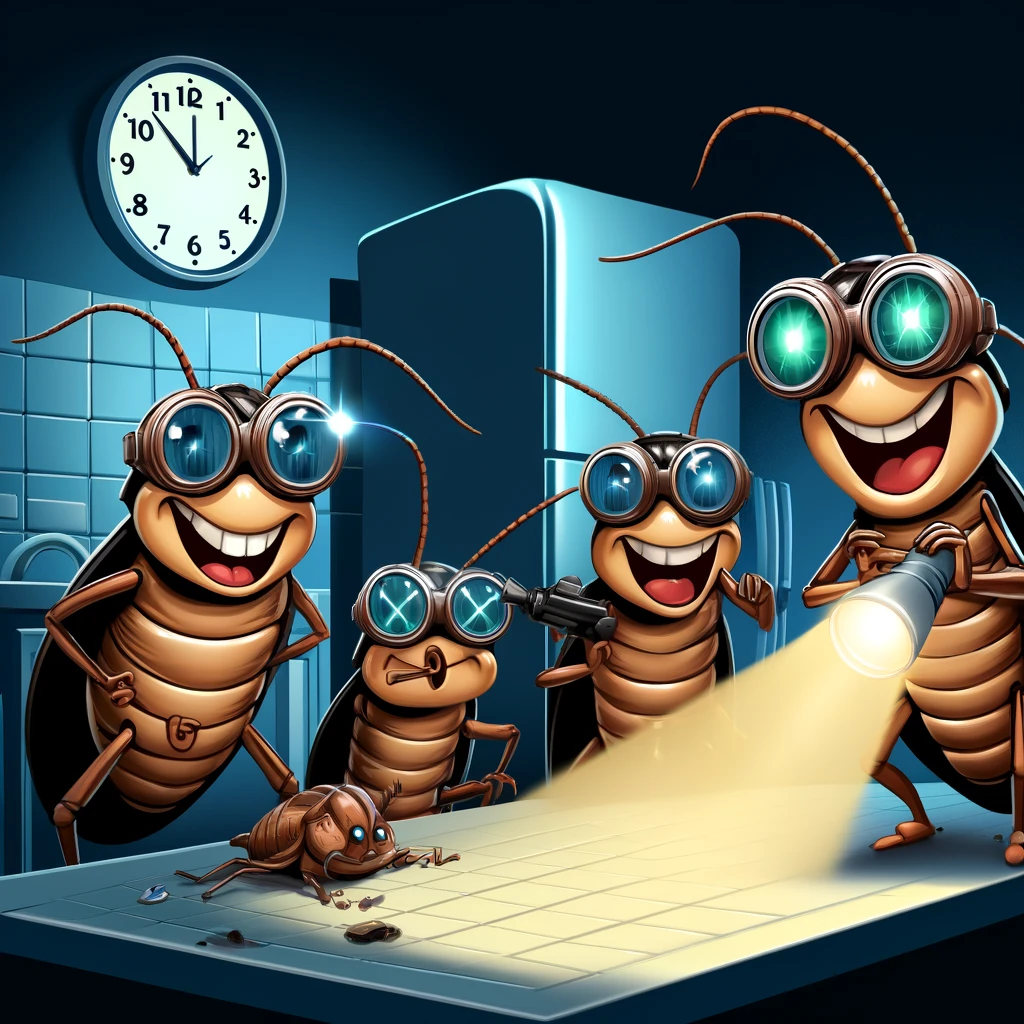 Water bugs, commonly known as cockroaches, are notorious for their nocturnal activity. If you’ve ever switched on a light at night and seen these pests scurrying away, you might wonder why they are more active after dark. In this article, we’ll explore the reasons behind the nighttime behavior of water bugs, their survival strategies, and how to manage their activity to keep them out of your home.
Water bugs, commonly known as cockroaches, are notorious for their nocturnal activity. If you’ve ever switched on a light at night and seen these pests scurrying away, you might wonder why they are more active after dark. In this article, we’ll explore the reasons behind the nighttime behavior of water bugs, their survival strategies, and how to manage their activity to keep them out of your home.
Understanding Nocturnal Behavior
Adaptation to Avoid Predators
One of the primary reasons water bugs are nocturnal is to avoid predators. Many of their natural enemies, such as birds, reptiles, and larger insects, are more active during the day. By coming out at night, water bugs can reduce the risk of being eaten.
Environmental Factors
- Temperature and Humidity: Water bugs thrive in warm and humid environments. Nighttime often provides the ideal conditions for these insects to remain active and forage for food without the risk of drying out.
- Reduced Disturbance: Human activity tends to decrease at night, providing a quieter and safer environment for water bugs to explore and search for food without interference.
Foraging for Food
Food Availability
Water bugs are opportunistic feeders and will eat a wide variety of organic materials. At night, they can forage for food more effectively, as there is less competition and disturbance from humans and other animals.
Hiding Spots
During the day, water bugs hide in dark, damp places such as under sinks, behind appliances, and in basements. At night, they come out to search for food, knowing that these hiding spots will keep them safe until they need to return.
Reproduction and Social Behavior
Mating Activity
Water bugs, like many insects, are more likely to engage in mating behaviors at night. The cover of darkness provides a safer environment for finding and attracting mates without the threat of predation.
Communication
Water bugs use chemical signals called pheromones to communicate with each other. These signals are often more effective at night when there is less air movement and interference, allowing them to coordinate activities such as foraging and mating.
Managing Nocturnal Activity
Maintaining Cleanliness
- Regular Cleaning: Keep your home clean, especially kitchens and bathrooms, to remove food sources and reduce hiding spots.
- Proper Food Storage: Store food in sealed containers and dispose of garbage regularly.
Reducing Moisture
- Fix Leaks: Repair any leaky faucets and pipes to reduce moisture levels.
- Use Dehumidifiers: In damp areas, use dehumidifiers to lower humidity levels.
Sealing Entry Points
- Close Off Cracks and Gaps: Use caulk and weather stripping to seal cracks and gaps where water bugs might enter.
- Install Screens: Ensure that windows and vents have tight-fitting screens to keep water bugs out.
Using Traps and Baits
- Traps: Place sticky traps in areas where you have seen water bugs to monitor and reduce their numbers.
- Baits: Use cockroach baits in strategic locations to attract and kill water bugs.
Professional Pest Control
For severe infestations, consider hiring a professional pest control service. Professionals can provide comprehensive inspections and targeted treatments to effectively manage and eliminate water bug populations.
Conclusion
Water bugs come out at night primarily to avoid predators, take advantage of favorable environmental conditions, and forage for food. Understanding their nocturnal behavior can help you implement effective strategies to manage and prevent infestations. By maintaining cleanliness, reducing moisture, and sealing entry points, you can create an environment that is less inviting to these nocturnal pests.
Call to Action
If you’re dealing with a water bug problem, take proactive steps to address it. Regular cleaning, moisture control, and sealing entry points are key to preventing infestations. For persistent issues, don’t hesitate to contact a professional pest control service for expert assistance.
What Does Roach Rash Look Like?
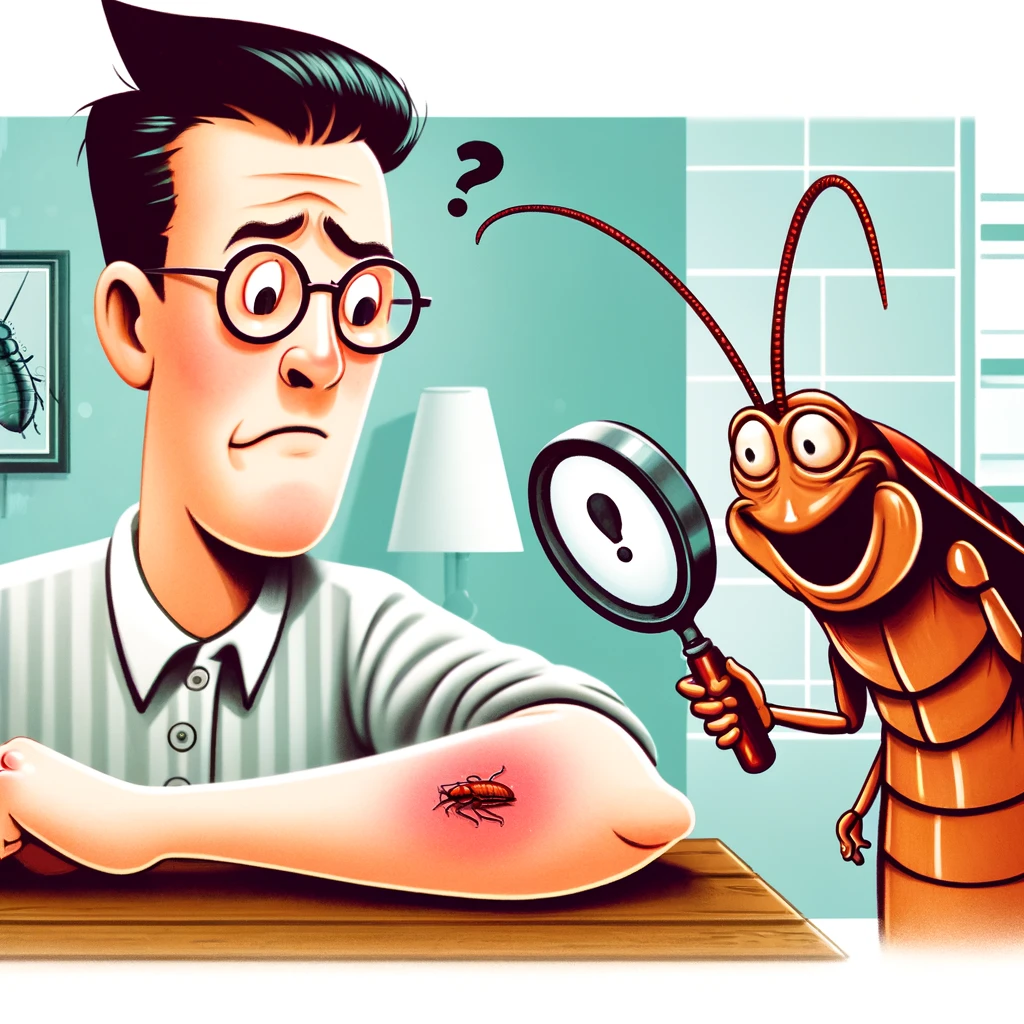 Cockroach infestations can lead to various health issues, one of which is the development of a skin condition known as “roach rash.” Understanding what roach rash looks like and how to treat it can help you manage this uncomfortable reaction and prevent further exposure. In this article, we’ll explore the causes, symptoms, and treatments for roach rash, as well as tips for preventing cockroach infestations in your home.
Cockroach infestations can lead to various health issues, one of which is the development of a skin condition known as “roach rash.” Understanding what roach rash looks like and how to treat it can help you manage this uncomfortable reaction and prevent further exposure. In this article, we’ll explore the causes, symptoms, and treatments for roach rash, as well as tips for preventing cockroach infestations in your home.
What is Roach Rash?
Causes of Roach Rash
Roach rash is a skin reaction caused by allergens present in cockroach droppings, saliva, and shed skins. When these allergens come into contact with the skin, they can trigger an allergic reaction, leading to the development of a rash.
Symptoms of Roach Rash
Appearance
- Redness: The affected area may appear red and inflamed.
- Bumps: Small, raised bumps or welts can develop on the skin.
- Itching: The rash is often accompanied by intense itching, which can lead to scratching and further irritation.
- Swelling: In some cases, the skin around the rash may swell.
Common Locations
Roach rash can occur anywhere on the body, but it is most commonly found on areas that come into direct contact with contaminated surfaces, such as:
- Hands and Arms: From touching contaminated surfaces.
- Face and Neck: From allergens settling on the skin.
- Legs and Feet: From walking barefoot on contaminated floors.
How to Identify Roach Rash
Visual Identification
Roach rash can be identified by its characteristic appearance:
- Clustered Bumps: The rash often appears as clusters of small, itchy bumps.
- Localized Redness: The area around the bumps is typically red and irritated.
- Scratching Marks: Due to intense itching, there may be visible scratch marks or broken skin.
When to Seek Medical Attention
If you experience severe symptoms, such as difficulty breathing, swelling of the face or throat, or a widespread rash, seek medical attention immediately. These could be signs of a more serious allergic reaction.
Treating Roach Rash
Home Remedies
- Cold Compress: Apply a cold compress to the affected area to reduce itching and swelling.
- Oatmeal Bath: Taking an oatmeal bath can help soothe irritated skin.
- Aloe Vera: Applying aloe vera gel can provide relief from itching and promote healing.
Over-the-Counter Treatments
- Antihistamines: Oral antihistamines can help reduce itching and allergic reactions.
- Hydrocortisone Cream: Topical hydrocortisone cream can reduce inflammation and itching.
- Calamine Lotion: Applying calamine lotion can provide a cooling effect and reduce itching.
Professional Medical Treatment
For severe or persistent cases, consult a healthcare professional. They may prescribe stronger medications or provide additional treatments to manage the symptoms.
Preventing Roach Rash
Maintaining Cleanliness
- Regular Cleaning: Clean your home regularly to remove food crumbs, spills, and other attractants.
- Proper Food Storage: Store food in sealed containers and dispose of garbage regularly.
Controlling Humidity
- Fix Leaks: Repair any leaky faucets and pipes to reduce moisture levels.
- Use Dehumidifiers: In damp areas, use dehumidifiers to lower humidity levels.
Sealing Entry Points
- Close Off Cracks and Gaps: Use caulk and weather stripping to seal cracks and gaps where cockroaches might enter.
- Install Screens: Ensure that windows and vents have tight-fitting screens to keep cockroaches out.
Professional Pest Control
For severe infestations, consider hiring a professional pest control service. Professionals can provide comprehensive inspections and targeted treatments to effectively manage and eliminate cockroach populations.
Roach rash is an uncomfortable skin condition caused by allergens from cockroaches. Recognizing the symptoms and knowing how to treat and prevent it can help you manage this issue effectively. By maintaining cleanliness, controlling humidity, and sealing entry points, you can reduce the risk of cockroach infestations and the associated health problems.
If you suspect a cockroach infestation in your home, take immediate steps to address it. Regular cleaning, moisture control, and sealing entry points are key to preventing infestations. If you need assistance, don’t hesitate to contact a professional pest control service for expert help.
Can Cockroaches Bite Your Eyelid?
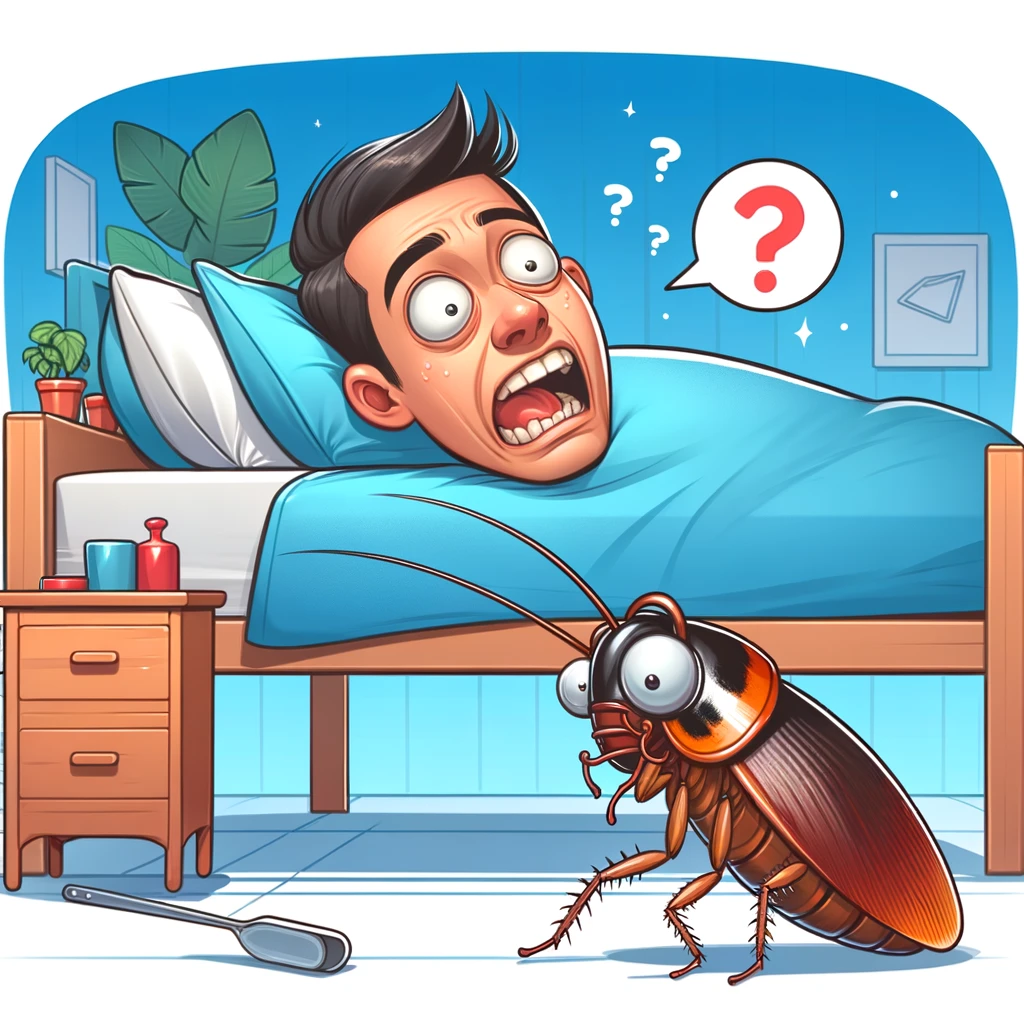 Cockroaches are notorious for their ability to invade our homes and cause distress. Among the various concerns people have about these pests, one particularly unsettling question is whether cockroaches can bite your eyelid. In this article, we’ll explore the truth behind this concern, the behavior of cockroaches, and how to protect yourself from these unwelcome intruders.
Cockroaches are notorious for their ability to invade our homes and cause distress. Among the various concerns people have about these pests, one particularly unsettling question is whether cockroaches can bite your eyelid. In this article, we’ll explore the truth behind this concern, the behavior of cockroaches, and how to protect yourself from these unwelcome intruders.
Do Cockroaches Bite?
General Behavior
Cockroaches are primarily scavengers, feeding on a wide variety of organic matter. While they are equipped with mouthparts capable of biting, they typically prefer to feed on food scraps, decaying matter, and other readily available sources of nutrition.
Biting Incidents
Although cockroach bites on humans are rare, they are not entirely unheard of. In extreme cases of severe infestations and food scarcity, cockroaches have been known to bite humans. These bites usually occur on exposed areas of the body, such as hands, feet, and fingers. But what about the eyelids?
Can Cockroaches Bite Your Eyelid?
Possible but Unlikely
The possibility of a cockroach biting your eyelid exists but is highly unlikely. Cockroaches are more likely to explore your face while you sleep due to the moisture and food particles that might be present. However, actual bites on the eyelid are extremely rare and typically occur under very unusual circumstances, such as:
- Severe Infestations: When cockroach populations are extremely high and food is scarce, they might resort to unusual food sources.
- Extended Periods of Immobility: If a person is immobile for long periods, such as in deep sleep, cockroaches might explore and occasionally bite.
What Happens if a Cockroach Bites Your Eyelid?
Symptoms
If a cockroach were to bite your eyelid, you might experience:
- Redness and Swelling: The bite area may become red and swollen due to the irritation and potential allergic reaction.
- Itching and Pain: The bite may be itchy and slightly painful.
- Risk of Infection: As with any insect bite, there is a risk of secondary infection if the bite area is scratched excessively.
First Aid
If you suspect a cockroach bite on your eyelid:
- Clean the Area: Gently wash the bite area with soap and water to reduce the risk of infection.
- Apply a Cold Compress: Use a cold compress to reduce swelling and relieve pain.
- Use Over-the-Counter Treatments: Apply an anti-itch cream or take an antihistamine to alleviate itching and discomfort.
- Seek Medical Attention: If the bite shows signs of infection or if you experience a severe allergic reaction, consult a healthcare professional.
Preventing Cockroach Bites
Maintain Cleanliness
- Keep Your Home Clean: Regularly clean your home, particularly kitchens and bathrooms, to eliminate food sources and hiding spots.
- Store Food Properly: Keep food in sealed containers and dispose of garbage regularly.
Reduce Moisture
- Fix Leaks: Repair any leaky faucets and pipes to reduce moisture levels.
- Use Dehumidifiers: In damp areas, use dehumidifiers to lower humidity levels.
Seal Entry Points
- Close Off Cracks and Gaps: Use caulk and weather stripping to seal cracks and gaps where cockroaches might enter.
- Install Screens: Ensure that windows and vents have tight-fitting screens to keep cockroaches out.
Professional Pest Control
For severe infestations, consider hiring a professional pest control service. Professionals can provide comprehensive inspections and targeted treatments to effectively manage and eliminate cockroach populations.
While the idea of a cockroach biting your eyelid is certainly unsettling, such incidents are extremely rare. Cockroaches are more likely to scavenge for food in your home than to bite humans. By maintaining cleanliness, reducing moisture, and sealing entry points, you can protect yourself and your home from these pests. If you do experience a cockroach bite, follow proper first aid steps and seek medical attention if necessary.
Stay vigilant in your efforts to keep cockroaches out of your home. Regular cleaning, moisture control, and sealing entry points are key to preventing infestations. If you need help, don’t hesitate to contact a professional pest control service for expert assistance.
Can Cockroaches Live in Your Balls?
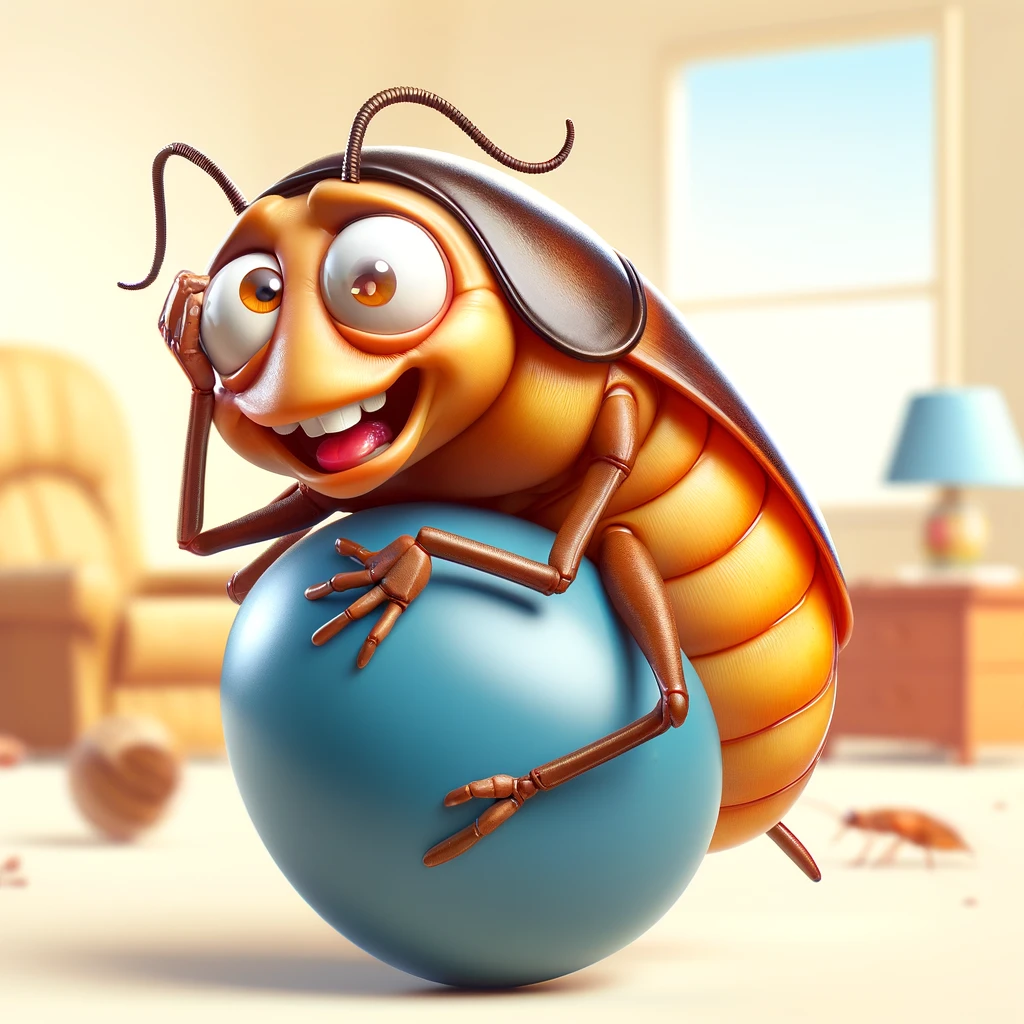 One of the more bizarre and unsettling myths about cockroaches is the idea that they can live in human body parts, including “balls.” This myth is likely to cause quite a bit of alarm, but let’s set the record straight. In this article, we’ll explore the origins of this myth, the biology of cockroaches, and why such a scenario is highly improbable.
One of the more bizarre and unsettling myths about cockroaches is the idea that they can live in human body parts, including “balls.” This myth is likely to cause quite a bit of alarm, but let’s set the record straight. In this article, we’ll explore the origins of this myth, the biology of cockroaches, and why such a scenario is highly improbable.
Debunking the Myth
Origins of the Myth
The myth that cockroaches can live in human body parts likely stems from general fears about these pests and their invasive nature. Cockroaches are known to hide in dark, moist places, leading to exaggerated stories about where they might take refuge.
Biology of Cockroaches
Cockroaches are indeed resilient and can survive in a variety of environments, but their biology makes it unlikely for them to live inside human bodies. Here’s why:
- Preferred Habitats: Cockroaches thrive in warm, moist environments with easy access to food. Common hiding spots include kitchens, bathrooms, and basements—not human body parts.
- Feeding Habits: Cockroaches are scavengers that feed on organic matter, including food scraps, decaying matter, and garbage. Human bodies do not provide the necessary sustenance for cockroaches.
Human Anatomy and Cockroach Behavior
Incompatibility with Human Bodies
The idea of cockroaches living in human body parts is implausible due to several factors:
- Temperature and Environment: Human bodies are not conducive environments for cockroaches. The internal temperature and conditions are not suitable for their survival.
- Access and Size: Cockroaches are relatively large insects and would struggle to enter or reside within small body cavities.
- Human Response: If a cockroach attempted to enter a body part, it would be met with immediate physical reactions, such as scratching or shaking, to remove the intruder.
Real Risks of Cockroach Infestations
Health Concerns
While cockroaches cannot live in human body parts, they can still pose health risks through:
- Allergies and Asthma: Cockroach droppings, saliva, and shed skins can trigger allergic reactions and asthma in sensitive individuals.
- Contamination: Cockroaches can contaminate food and surfaces with pathogens, potentially leading to foodborne illnesses.
Preventing Infestations
To keep cockroaches out of your home and reduce health risks, follow these preventive measures:
- Maintain Cleanliness: Regularly clean your home, especially kitchens and bathrooms, to remove food sources and reduce clutter.
- Seal Entry Points: Use caulk and other sealants to close off cracks and gaps where cockroaches might enter.
- Reduce Moisture: Fix leaks and use dehumidifiers to lower humidity levels in damp areas.
The myth that cockroaches can live in human body parts, including “balls,” is just that—a myth. While these pests are undeniably unwelcome guests in our homes, their biology and behavior make such scenarios highly unlikely. By maintaining cleanliness and taking preventive measures, you can effectively manage and prevent cockroach infestations.
If you’re concerned about cockroaches in your home, take proactive steps to prevent infestations. Regularly clean, seal entry points, and reduce moisture to create an environment that is uninviting to these pests. For persistent infestations, consider contacting a professional pest control service for comprehensive solutions.
How did cockroaches get their name?
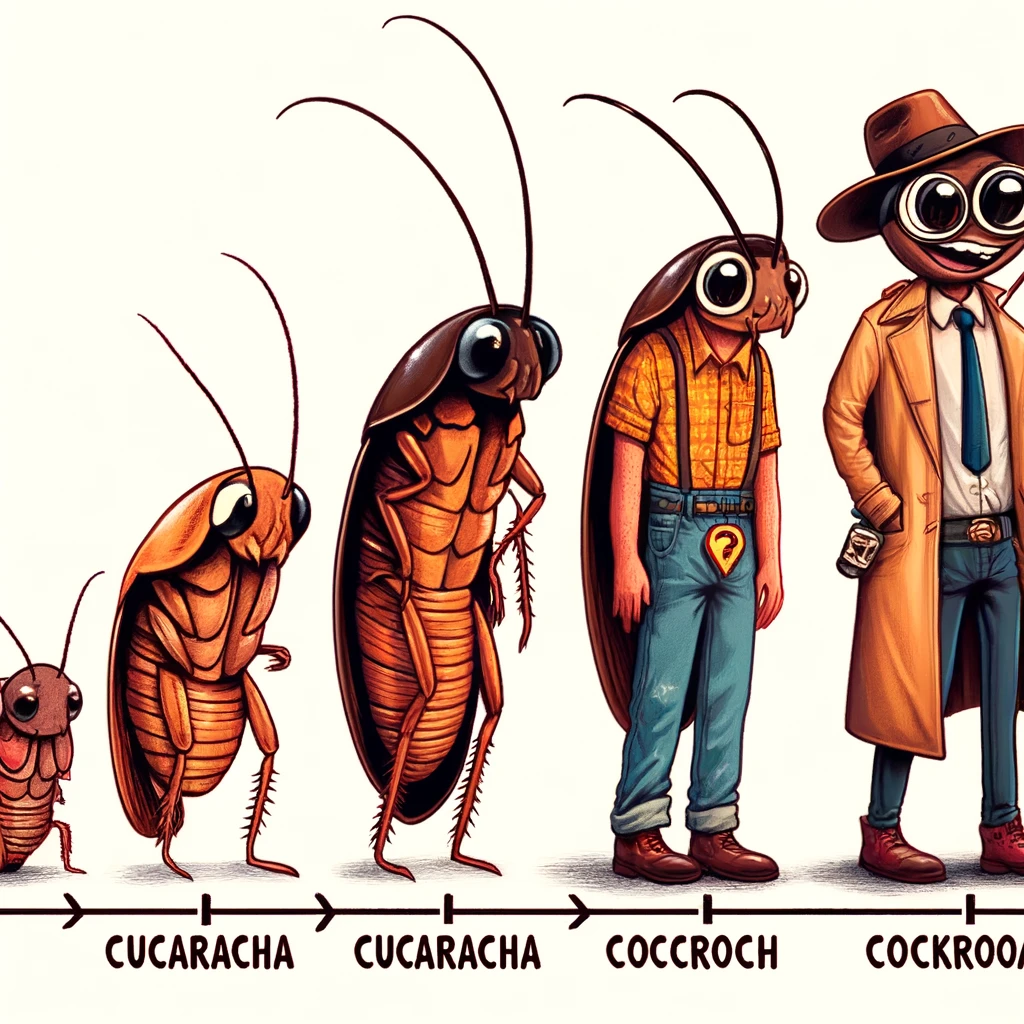 Cockroaches are some of the most notorious pests in the world, known for their resilience and ability to thrive in various environments. But have you ever wondered how these insects got their name? The etymology of the word “cockroach” is as fascinating as the creatures themselves. In this article, we’ll delve into the history and origins of the name “cockroach,” tracing it back through different languages and cultures.
Cockroaches are some of the most notorious pests in the world, known for their resilience and ability to thrive in various environments. But have you ever wondered how these insects got their name? The etymology of the word “cockroach” is as fascinating as the creatures themselves. In this article, we’ll delve into the history and origins of the name “cockroach,” tracing it back through different languages and cultures.
The Etymology of “Cockroach”
Spanish Roots
The name “cockroach” is derived from the Spanish word “cucaracha.” The term “cucaracha” has been used in Spanish-speaking countries for centuries to describe these insects.
- Cucaracha: In Spanish, “cucaracha” is a general term for cockroach. The word itself likely comes from a combination of “cuca” (a term for a type of beetle) and the suffix “-racho” or “-racha,” which could be a diminutive form.
Transition to English
When English-speaking settlers encountered cockroaches in the Americas, they adopted the Spanish term but modified it to fit English phonetics and spelling.
- Cockroach: The English adaptation “cockroach” first appeared in the early 17th century. The transformation from “cucaracha” to “cockroach” likely involved a process known as folk etymology, where unfamiliar foreign words are changed to resemble more familiar English words. In this case, “cock” (a familiar word) and “roach” (a type of fish) were combined to form “cockroach.”
Historical References
Early Descriptions
Cockroaches have been known to humans for thousands of years, and references to them appear in many ancient texts.
- Classical References: Ancient Greeks and Romans described insects that are believed to be cockroaches. Aristotle mentioned them in his writings, referring to them as “blatta,” which is still used as a scientific term for the cockroach family.
- Medieval Texts: During the Middle Ages, cockroaches were often referred to using Latin terms derived from “blatta,” and they were commonly mentioned in discussions about pests and household insects.
Cultural Impact
Songs and Folklore
The word “cucaracha” is famously associated with the traditional Mexican folk song “La Cucaracha.” The song tells the story of a cockroach that cannot walk, and over the years, it has been adapted to include various humorous and political verses.
- La Cucaracha: The song “La Cucaracha” became popular during the Mexican Revolution, with soldiers creating new verses to reflect current events and political satire. The enduring popularity of the song has helped cement the word “cucaracha” in popular culture.
Scientific Classification
Taxonomy
In scientific contexts, cockroaches are classified under the order Blattodea. This order includes both cockroaches and termites, highlighting the close evolutionary relationship between these insects.
- Blattodea: The name “Blattodea” comes from the Latin word “blatta,” used by Aristotle and other ancient scholars. Within this order, there are several families, including Blattidae and Blattellidae, which encompass the various species of cockroaches.
The name “cockroach” has a rich history that spans multiple languages and cultures. From the Spanish “cucaracha” to the English “cockroach,” the term has evolved over centuries, reflecting both linguistic changes and the enduring presence of these resilient insects in human society. Understanding the etymology and historical context of the name adds another layer of fascination to these common yet remarkable creatures.
Stay curious and keep exploring the fascinating world of insects. If you encounter cockroaches in your home, remember their storied history and take steps to manage and control their presence effectively. For more interesting facts and practical advice on dealing with cockroaches, explore our other articles and resources.
Why Do Cockroaches Shed Their Skin?
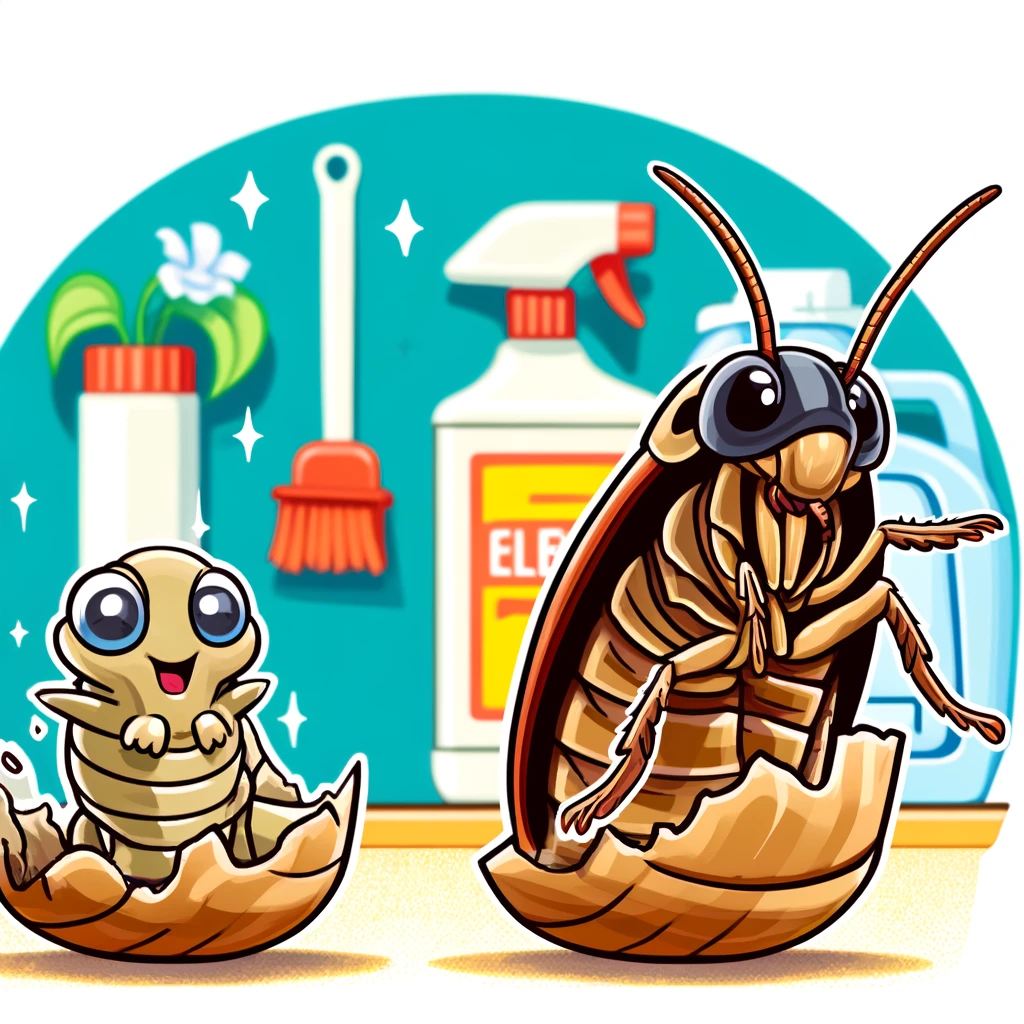 Cockroaches are resilient pests that can adapt to various environments, making them difficult to control. One intriguing aspect of their biology is their ability to shed their skin. In this article, we’ll explore why and how cockroaches shed their skin, the stages of their life cycle, and what this process means for pest control.
Cockroaches are resilient pests that can adapt to various environments, making them difficult to control. One intriguing aspect of their biology is their ability to shed their skin. In this article, we’ll explore why and how cockroaches shed their skin, the stages of their life cycle, and what this process means for pest control.
The Molting Process
What is Molting?
Molting, or ecdysis, is the process by which cockroaches shed their exoskeleton to grow. Unlike mammals that grow continuously, insects like cockroaches have a rigid exoskeleton that doesn’t expand. To accommodate their growing bodies, they must periodically shed this outer layer and form a new, larger one.
Why Do Cockroaches Shed Their Skin?
Growth
The primary reason cockroaches shed their skin is to grow. Each time they molt, they emerge larger and closer to their adult size.
Developmental Stages
Cockroaches undergo several developmental stages called instars. Each stage involves molting and results in a slightly larger and more developed cockroach. This process continues until they reach adulthood.
The Molting Process in Detail
Stages of Molting
- Premolt Stage
- The cockroach prepares for molting by absorbing water and swelling, which helps split the old exoskeleton.
- Ecdysis
- The actual shedding of the exoskeleton. The cockroach wriggles out of its old skin, emerging soft and pale.
- Postmolt Stage
- The new exoskeleton hardens and darkens. During this time, the cockroach is vulnerable to predators and environmental hazards.
Frequency of Molting
Cockroaches molt several times throughout their nymph stage. The number of molts varies by species but typically ranges from 5 to 7 times before they reach maturity.
Identifying Molted Skins
Appearance
Molted cockroach skins, or exuviae, are typically transparent or light brown and retain the shape of the cockroach, including legs and antennae. Finding these skins in your home is a clear sign of an infestation.
Common Locations
- Kitchens: Behind appliances and inside cabinets.
- Bathrooms: Around sinks and bathtubs.
- Basements: In dark, damp areas.
Implications for Pest Control
Signs of Infestation
Molted skins indicate active cockroach populations. If you find these in your home, it’s essential to take immediate action to prevent the infestation from worsening.
Increased Allergen Levels
Cockroach skins, along with feces and saliva, contribute to indoor allergens. These can trigger asthma and allergies, particularly in children.
Targeting Vulnerable Stages
During molting, cockroaches are more vulnerable. Pest control efforts that target these stages can be more effective. Using growth regulators and insecticides during these periods can help reduce cockroach populations.
How to Control Cockroach Infestations
Sanitation
- Keep It Clean: Regularly clean kitchens and bathrooms, focusing on removing food crumbs and spills.
- Proper Food Storage: Store food in airtight containers and promptly dispose of garbage.
Eliminate Hiding Spots
- Seal Cracks and Gaps: Use caulk or other sealants to close off entry points.
- Reduce Clutter: Remove unnecessary items that can serve as hiding spots.
Moisture Control
- Fix Leaks: Repair any leaky faucets or pipes.
- Use Dehumidifiers: Lower humidity levels in damp areas.
Chemical Controls
- Baits and Traps: Place cockroach baits and traps in strategic locations.
- Insecticides: Use insecticidal sprays or dusts in cracks, crevices, and other areas where cockroaches hide.
Professional Pest Control
For severe infestations, professional pest control services can provide comprehensive inspections and targeted treatments.
Yes, cockroaches do shed their skin, and understanding this process is crucial for effective pest management. By recognizing the signs of molting and taking appropriate control measures, you can keep your home free of these resilient pests.
Stay vigilant in your efforts to control cockroaches. Regularly inspect your home for signs of molting and other indicators of infestation, and take proactive steps to maintain a clean and pest-free environment. If you need assistance, don’t hesitate to contact professional pest control services for expert help.
What Smell do Palmetto Bugs Hate?
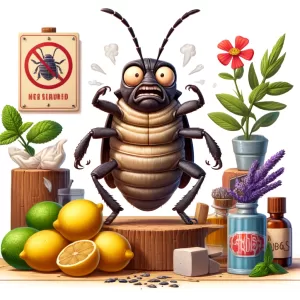 Palmetto bugs, also known as American cockroaches, are unwelcome visitors in many homes. One of the most effective and natural ways to repel these pests is by using scents they find offensive. In this article, we’ll explore the smells that palmetto bugs hate and how you can use these to keep them out of your home.
Palmetto bugs, also known as American cockroaches, are unwelcome visitors in many homes. One of the most effective and natural ways to repel these pests is by using scents they find offensive. In this article, we’ll explore the smells that palmetto bugs hate and how you can use these to keep them out of your home.
Why Smells Work Against Palmetto Bugs
Palmetto bugs rely heavily on their sense of smell to find food and navigate their environment. Strong, unpleasant odors can disrupt their ability to detect food and communicate, driving them away from treated areas.
Smells Palmetto Bugs Hate
- Citrus
- Description: Palmetto bugs detest the fresh, sharp scent of citrus fruits like lemons, oranges, and grapefruits.
- Usage: Use citrus essential oils or the peels of citrus fruits. Place peels in areas where palmetto bugs are likely to enter, or create a spray using citrus oil mixed with water.
- Peppermint
- Description: The strong, minty aroma of peppermint is highly repellent to palmetto bugs.
- Usage: Place peppermint oil-soaked cotton balls in strategic locations, or make a spray by mixing peppermint oil with water.
- Lavender
- Description: Lavender’s pleasant scent to humans is disliked by palmetto bugs.
- Usage: Use lavender essential oil in a diffuser, or place dried lavender sachets in areas prone to infestation.
- Eucalyptus
- Description: The medicinal, menthol-like scent of eucalyptus is another effective repellent.
- Usage: Apply eucalyptus oil to entry points, or use eucalyptus leaves in problem areas.
- Tea Tree Oil
- Description: Tea tree oil has a potent, antiseptic smell that palmetto bugs avoid.
- Usage: Mix tea tree oil with water to create a spray, and apply it around entry points and hiding spots.
- Cedarwood
- Description: The woody scent of cedar is known to repel a variety of insects, including palmetto bugs.
- Usage: Use cedarwood essential oil, or place cedar blocks and chips in closets and other infested areas.
How to Use These Smells to Repel Palmetto Bugs
- Essential Oil Sprays
- Recipe: Mix 10-15 drops of your chosen essential oil with one cup of water. Pour the mixture into a spray bottle and shake well.
- Application: Spray around doorways, windowsills, baseboards, and other entry points.
- Cotton Balls
- Method: Soak cotton balls in essential oil and place them in areas where palmetto bugs are likely to enter or hide.
- Replacement: Replace the cotton balls every few days to maintain a strong scent.
- Peels and Herbs
- Citrus Peels: Scatter fresh citrus peels in cabinets, under sinks, and near entry points.
- Dried Herbs: Use sachets filled with dried lavender or eucalyptus leaves in closets, drawers, and other storage areas.
Additional Tips for Repelling Palmetto Bugs
- Maintain Cleanliness
- Sanitation: Keep your home clean, especially the kitchen and bathroom areas. Regularly remove garbage and avoid leaving food out.
- Seal Entry Points
- Caulking: Seal cracks and gaps in walls, floors, and around windows and doors to prevent palmetto bugs from entering.
- Reduce Moisture
- Fix Leaks: Repair any leaks and use dehumidifiers in damp areas to make your home less attractive to palmetto bugs.
Using scents that palmetto bugs hate is a natural and effective way to keep these pests at bay. By incorporating essential oils, citrus peels, and dried herbs into your pest control routine, you can create an environment that is uninviting to palmetto bugs. Combine these methods with proper sanitation, sealing entry points, and reducing moisture for the best results.
Take action today by using these natural scents to repel palmetto bugs and maintain a clean, bug-free home. If you find that your efforts are not enough, consider seeking professional pest control services for more comprehensive solutions.
Baby Palmetto Bug: Identification and Control
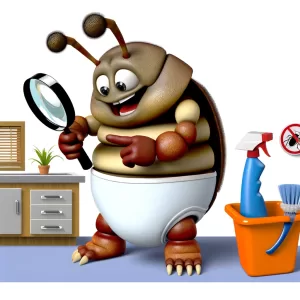 If you’ve encountered small, fast-moving insects in your home and are wondering if they might be baby palmetto bugs, you’re not alone. Understanding what baby palmetto bugs look like and how to deal with them is crucial for preventing a full-blown infestation. In this article, we’ll explore the life cycle of palmetto bugs, how to identify their nymphs, and effective methods to control and prevent these unwelcome pests.
If you’ve encountered small, fast-moving insects in your home and are wondering if they might be baby palmetto bugs, you’re not alone. Understanding what baby palmetto bugs look like and how to deal with them is crucial for preventing a full-blown infestation. In this article, we’ll explore the life cycle of palmetto bugs, how to identify their nymphs, and effective methods to control and prevent these unwelcome pests.
Life Cycle of Palmetto Bugs
Egg Stage Palmetto bugs, also known as American cockroaches, lay eggs in a protective case called an ootheca. Each ootheca can contain up to 16 eggs and is usually deposited in hidden, moist areas where the eggs can safely develop.
Nymph Stage When the eggs hatch, the young cockroaches, known as nymphs, emerge. These nymphs are often referred to as baby palmetto bugs. They undergo several molts as they grow, gradually developing into adults. The nymph stage can last several months, depending on environmental conditions.
Adult Stage After multiple molts, the nymphs mature into adult palmetto bugs. Adults can live for over a year, continuing the cycle by laying new eggs and perpetuating the infestation.
Identifying Baby Palmetto Bugs
Appearance
- Size: Nymphs are significantly smaller than adult palmetto bugs, typically measuring between 4 to 6 mm when they first hatch.
- Color: Young nymphs are usually white or light gray immediately after molting but darken to a reddish-brown color as they mature.
- Shape: Baby palmetto bugs have a similar body shape to adults but are smaller and lack fully developed wings.
Behavior
- Hiding Spots: Nymphs prefer dark, moist environments. Common hiding spots include under sinks, behind appliances, and in bathroom cabinets.
- Movement: Nymphs are fast and can quickly scurry away when disturbed, making them difficult to catch.
Preventing and Controlling Baby Palmetto Bugs
Sanitation
- Keep It Clean: Regularly clean kitchens and bathrooms to remove food crumbs and spills that can attract palmetto bugs.
- Proper Food Storage: Store food in sealed containers and promptly dispose of garbage to eliminate potential food sources.
Moisture Control
- Fix Leaks: Repair any leaky faucets or pipes to reduce the moisture that palmetto bugs need to thrive.
- Use Dehumidifiers: In particularly damp areas, use dehumidifiers to lower humidity levels.
Sealing Entry Points
- Caulk Cracks and Gaps: Inspect your home for cracks and gaps, especially around doors, windows, and the foundation. Seal these entry points to prevent nymphs from getting inside.
- Install Screens: Ensure that windows and vents have tight-fitting screens to keep palmetto bugs out.
Baits and Insecticides
- Baits: Use cockroach baits in areas where you have seen nymphs. Baits are effective because they attract and poison the bugs.
- Insecticides: Apply insecticidal sprays or dusts in cracks, crevices, and other areas where nymphs are likely to hide. Follow all safety instructions on the product label.
Professional Pest Control For severe infestations, it may be necessary to call in professional pest control services. Professionals can conduct thorough inspections, use specialized treatments, and provide ongoing monitoring to ensure the infestation is fully eradicated.
Conclusion
Identifying and controlling baby palmetto bugs is a critical step in preventing a larger infestation. By understanding their life cycle, recognizing the signs of nymph activity, and implementing effective control measures, you can keep your home free of these pests. Regular cleaning, moisture control, and sealing entry points are essential practices to maintain a pest-free environment.
Call to Action
Stay proactive in your efforts to control palmetto bugs. Regularly inspect your home, maintain cleanliness, and use appropriate pest control methods. If the infestation persists, don’t hesitate to seek professional help to ensure a thorough and effective solution.
Cockroach Eggs vs Poop: How to Tell the Difference
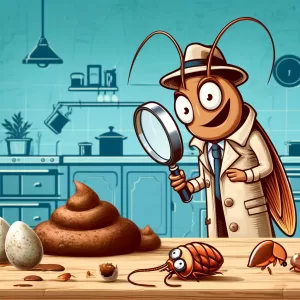 When dealing with a cockroach infestation, it’s crucial to distinguish between cockroach eggs and poop to effectively manage and eliminate these pests. Understanding the differences can help you identify the extent of the infestation and take appropriate action. In this guide, we’ll explore the characteristics of cockroach eggs and poop, helping you to accurately identify them and implement effective pest control measures.
When dealing with a cockroach infestation, it’s crucial to distinguish between cockroach eggs and poop to effectively manage and eliminate these pests. Understanding the differences can help you identify the extent of the infestation and take appropriate action. In this guide, we’ll explore the characteristics of cockroach eggs and poop, helping you to accurately identify them and implement effective pest control measures.
Cockroach Eggs
Appearance and Characteristics
Cockroach eggs are encased in a protective shell called an ootheca. Each ootheca contains multiple eggs, depending on the species of cockroach. Here are some key features:
- Shape and Size: Cockroach eggs are oval-shaped and can vary in size. On average, they are about 5-9 mm long.
- Color: The ootheca is typically brown or dark brown, though the exact shade can vary slightly by species.
- Texture: The outer shell of the ootheca is smooth and hard, designed to protect the developing eggs inside.
Common Locations
Cockroaches tend to lay their eggs in hidden, undisturbed areas. Common places to find cockroach eggs include:
- Crevices and cracks: In walls, floors, and furniture.
- Kitchen appliances: Under and behind stoves, refrigerators, and dishwashers.
- Bathrooms: Around sinks, bathtubs, and behind toilets.
Cockroach Poop
Appearance and Characteristics
Cockroach poop varies in appearance depending on the size and species of the cockroach. Here are some general characteristics:
- Shape and Size: Cockroach droppings can range from small, coffee ground-like particles (for smaller species) to larger, cylindrical pellets (for larger species like the American cockroach).
- Color: Typically dark brown or black.
- Texture: The texture of cockroach poop can be granular or pellet-like, and it often has a distinct, musty odor.
Common Locations
Cockroach droppings can be found in areas where cockroaches are active. These include:
- Kitchens: Near food sources, in cupboards, and under sinks.
- Bathrooms: Around plumbing fixtures and in cabinets.
- Living areas: Along baseboards, in corners, and behind furniture.
How to Identify Cockroach Eggs vs Poop
Visual Inspection
- Eggs: Look for small, oval-shaped cases that are smooth and uniform in color.
- Poop: Look for irregularly shaped droppings that vary in size and have a granular or pellet-like appearance.
Location
- Eggs: Often found in hidden, undisturbed areas where cockroaches feel safe laying their eggs.
- Poop: Commonly found along cockroach pathways and near food and water sources.
Quantity
- Eggs: You may find a few oothecae in hidden spots.
- Poop: Usually more widespread, especially in areas where cockroaches are feeding and nesting.
Why It Matters
Identifying whether you are dealing with cockroach eggs or poop can help determine the severity of the infestation and the best course of action:
- Cockroach Eggs: Indicate potential for future infestations as each ootheca can hatch multiple nymphs.
- Cockroach Poop: Indicates active cockroach presence and the areas they frequent.
Control and Prevention
Sanitation
- Clean Regularly: Keep kitchens and bathrooms clean to reduce food and water sources.
- Seal Food: Store food in airtight containers and dispose of garbage regularly.
Eliminate Hiding Spots
- Seal Cracks and Crevices: Use caulk or other sealants to close off entry points and hiding spots.
- Reduce Clutter: Remove unnecessary items that can serve as hiding spots for cockroaches.
Use Baits and Insecticides
- Baits: Place cockroach baits in areas where you have identified cockroach activity.
- Insecticides: Use insecticides in targeted areas to reduce the cockroach population.
Professional Pest Control
For severe infestations, it may be necessary to consult professional pest control services. Professionals can provide comprehensive inspections and tailored treatment plans to effectively manage and eliminate cockroach infestations.
Understanding the differences between cockroach eggs and poop is essential for effective pest control. By accurately identifying these signs, you can take the necessary steps to control and prevent cockroach infestations, ensuring a clean and healthy living environment.
Stay vigilant and proactive in managing cockroach infestations. Regularly inspect your home, maintain cleanliness, and use appropriate pest control methods to keep your space cockroach-free. If the infestation is severe, don’t hesitate to seek professional help to ensure comprehensive treatment.
- The Life Span of a Cockroach
- Do Cockroaches Eat Clothes?
- Do Cockroaches Have Teeth?
- Shrimps and Cockroaches
- Will Sleeping with the Light On Keep Cockroaches Away?
- How to get roaches out of your car overnight
- Do Cockroaches Feel Pain?
- How Many Legs Do Cockroaches Have?
- Comparing Cockroach Eggs Size for Different Types of Cockroaches
- Identifying a Cockroach Bite on the Lips or Face
- Black Water Bug Identification and Control
- Why Do Water Bugs Come Out At Night?
- What Does Roach Rash Look Like?
- Can Cockroaches Bite Your Eyelid?
- Can Cockroaches Live in Your Balls?
- How did cockroaches get their name?
- Why Do Cockroaches Shed Their Skin?
- What Smell do Palmetto Bugs Hate?
- Baby Palmetto Bug: Identification and Control
- Cockroach Eggs vs Poop: How to Tell the Difference
- How to Get Rid of Water Bugs
- How Long Can a Cockroach Live Without Air?
- The Lifecycle of the German Cockroach: From Egg to Adult
- Do Mice Eat Roaches
- Wood Roach vs. Cockroach